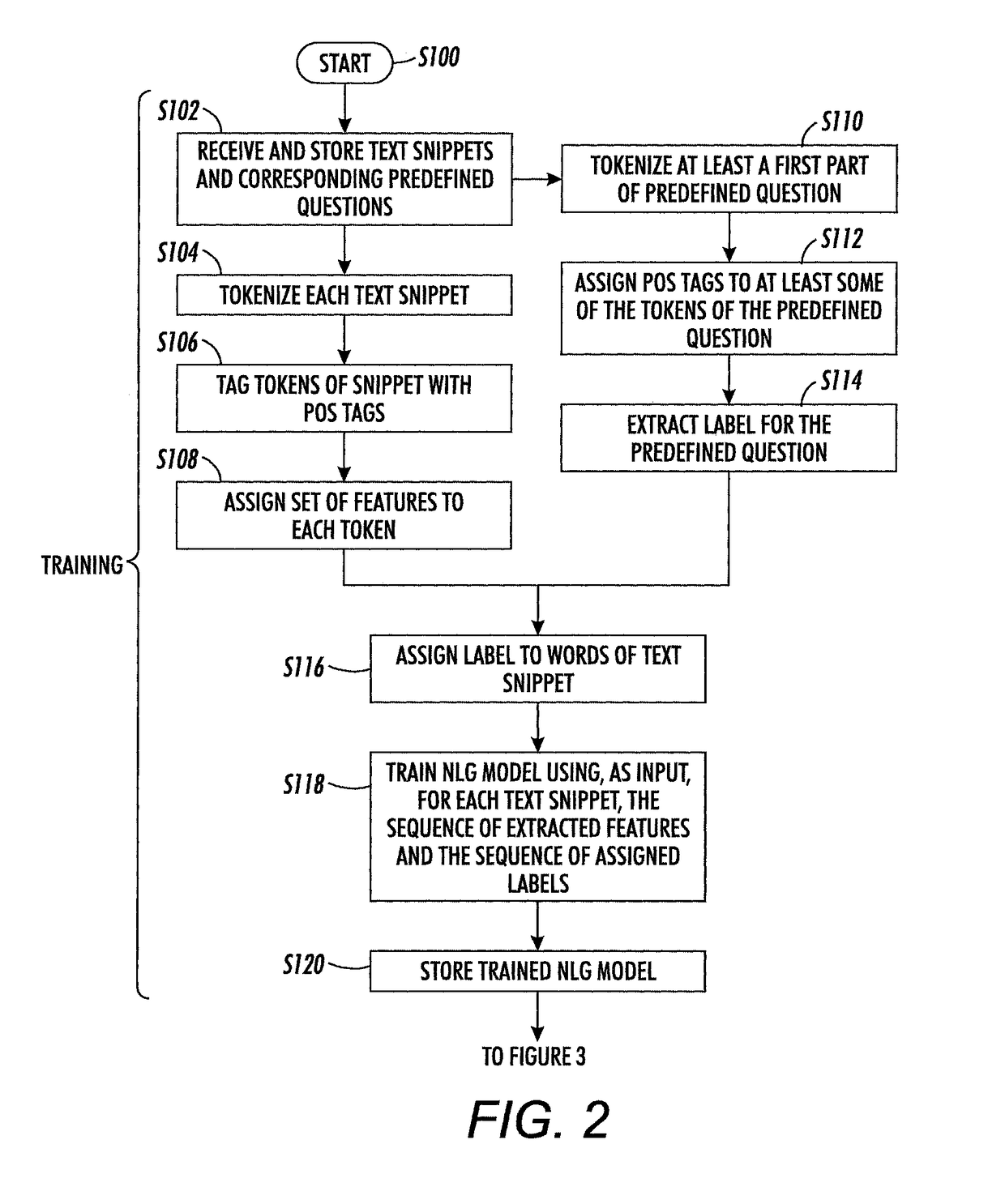Natural language generation, a hybrid sequence-to-sequence approach
a sequence-to-sequence and natural language technology, applied in the field of natural language generation, can solve the problems of difficult to identify the kind of questions that can be built out of a specific text snippet, slow development of machine learning (ml) techniques for text generation, and a substantial amount of manual inpu
- Summary
- Abstract
- Description
- Claims
- Application Information
AI Technical Summary
Benefits of technology
Problems solved by technology
Method used
Image
Examples
example
[0090]This example is in the context of customer care automation. A list of text snippets corresponding to symptoms are extracted, each associated to a manually provided question. Each text snippet is processed as followings. First, each text snippet is tokenized into a sequence of words. Then, each word is checked against an English dictionary to extract its parts-of-speech. Thereafter, a commercially available POS tagger is applied to keep only one part-of-speech per word. Finally, POS tags are produced to reflect the form of verbs and nouns as illustrated in TABLE 2 above. TABLE 3 shows an example of text snippet annotation, for a question generation task, used for evaluation purposes.
[0091]In this example, 1666 sentences (text snippets) extracted from a customer corpus were used to train the NLG model (CRF model), along with the labels of their manually-generated interrogatory sentences. The CRF model was then applied on 756 sentences for which no labels are provided, and a manu...
PUM
 Login to View More
Login to View More Abstract
Description
Claims
Application Information
 Login to View More
Login to View More - R&D
- Intellectual Property
- Life Sciences
- Materials
- Tech Scout
- Unparalleled Data Quality
- Higher Quality Content
- 60% Fewer Hallucinations
Browse by: Latest US Patents, China's latest patents, Technical Efficacy Thesaurus, Application Domain, Technology Topic, Popular Technical Reports.
© 2025 PatSnap. All rights reserved.Legal|Privacy policy|Modern Slavery Act Transparency Statement|Sitemap|About US| Contact US: help@patsnap.com



